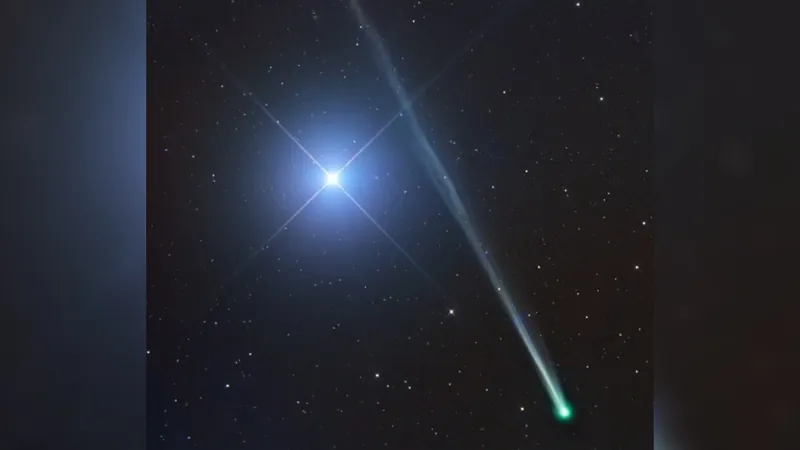
Is Comet C/2025 R2 (SWAN) Set to Dazzle Our Skies This October?
2025-09-22
Author: Sarah
Get ready, skywatchers! A newly discovered comet, C/2025 R2 (SWAN), could soon adorn our evening skies, promising a celestial spectacle.
A Bright Discovery
On September 10, Ukrainian astronomer Vladimir Bezugly was poring over images from the Solar Wind Anisotropies (SWAN) camera aboard the SOHO spacecraft when he stumbled upon a moving object—what turned out to be a stunning new comet. Bezugly characterized this discovery as one of the brightest ever recorded via SWAN imagery, making it the 20th official SWAN comet to capture the attention of astronomers.
How Bright is SWAN?
Astronomers use a scale to quantify the brightness of celestial objects, with lower numbers indicating greater brightness. For reference, stars shine at around magnitude 0 or +1, while the human eye can see objects with a magnitude up to +6.5 under ideal conditions. Current observations show that SWAN is hovering around magnitude +7, making it just shy of naked-eye visibility, although good binoculars can easily bring it into view.
Mark Your Calendars for October 21!
Predictions about Comet SWAN's brilliance during its closest approach to Earth (perigee) on October 21 suggest it might reach a magnitude between +6 and +7. This means it could be faintly visible without optical aid during peak times, especially around October 12.
Where and When to Look
Currently, SWAN has primarily been spotted from the Southern Hemisphere, but this will change as it moves northward throughout October. By the end of the first week, it will rise higher in the southwest sky, reaching about 12 degrees above the horizon shortly after sunset. By October 28, expect it to be approximately 30 degrees up in the night sky, providing ample opportunity for viewing.
Understanding the Comet's Nature
Unlike dusty comets that reflect light more effectively, SWAN is primarily composed of gas, giving it a bluish-white glow. When viewed through binoculars or telescopes, it will likely appear as a bright, circular cloud with a faint tail. Think of it as a "bright apple on a stick"—not the dramatic tails of some larger comets but endearing in its uniqueness.
Forget the Meteor Shower Hype!
Social media is buzzing with rumors that Comet SWAN might create a meteor shower around October 4 to 6. This misconception arises from the suggestion that the comet's orbit intersects with Earth’s. However, calculations reveal that they won't actually cross paths. In reality, Earth's orbit is ahead of SWAN's, meaning there's no chance of encountering any meteoric debris.
As we gear up for this bright visitor, remember: while Comet SWAN may not shower us with meteors, its presence will definitely offer a captivating glimpse into the wonders of our universe. Keep your binoculars ready and mark your calendars for a spectacular October!





 Brasil (PT)
Brasil (PT)
 Canada (EN)
Canada (EN)
 Chile (ES)
Chile (ES)
 Česko (CS)
Česko (CS)
 대한민국 (KO)
대한민국 (KO)
 España (ES)
España (ES)
 France (FR)
France (FR)
 Hong Kong (EN)
Hong Kong (EN)
 Italia (IT)
Italia (IT)
 日本 (JA)
日本 (JA)
 Magyarország (HU)
Magyarország (HU)
 Norge (NO)
Norge (NO)
 Polska (PL)
Polska (PL)
 Schweiz (DE)
Schweiz (DE)
 Singapore (EN)
Singapore (EN)
 Sverige (SV)
Sverige (SV)
 Suomi (FI)
Suomi (FI)
 Türkiye (TR)
Türkiye (TR)
 الإمارات العربية المتحدة (AR)
الإمارات العربية المتحدة (AR)